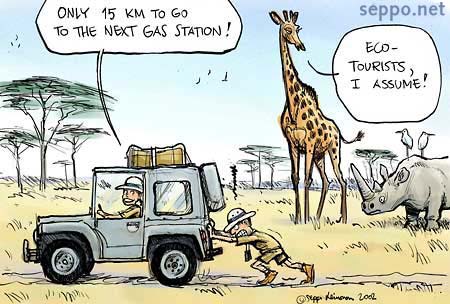| Eco Tourism Today in Minnesota: Back to the Future (well sort of) | |

By John Freivalds
Published 12/13/2019
Duluth News Tribune
It was 1989, and I left Minnesota to return to Latvia with 26 other American Latvian businessmen right before our native land was to break free from the Soviet Union. We wanted the country to turn to the West and bring ideas and money to make that happen. I met a landowner who wanted to develop tourism and asked him a series of questions: Does your land have any interesting features? Is it on a road? Did anything historical happen there? Does it have running water and electricity? Is it on the way to someplace interesting? The answer was no to all my questions. This poor bewildered guy didn't have a chance. You needed "something" to attract the global tourist and be part of the modern money economy.
Fast forward to the doorstep of 2020, with many people, particularly millennials, seeking out eco-friendly getaways, and 30 million of them belonging to environmental organizations. People just want to sit in the quiet of the woods. The antithesis of ecotourism is going to Disney World, which has 56,000 tourists daily. This Latvian who I thought would not have a chance with tourism is now in the forefront of what is known as "ecotourism."
Wikipedia defines ecotourism as "responsible travel to natural areas that conserve the environment and sustain the well-being of local people." Minnesota has been in the forefront of this for more than 100 years. Minnesota created the oldest state park system in the country with the establishment of Itasca State Park in 1891, and the Boundary Waters Canoe Area Wilderness is still pristine and beyond eco-friendly.
I looked to see what resortsandLodges.com had to say about ecotourism in our state. "Minnesota offers travelers a wide variety of natural settings to observe during their ecotourism getaways. While some individuals may want to explore the open waters of Lake Superior or the Lake of the Woods area, other travelers may be more comfortable hiking through the Gunflint Trail up to the Canadian border," it reported.
If you think ecotourism is getting away from it all, be wary that many places are rebranding themselves as eco-friendly when they are not. The website of one ecolodge on the Gunflint Trail said this: "The ecotourist is offered kitchenette, whirlpool and sauna, satellite TV, DVD players, Wi-Fi, an indoor swimming pool and full service restaurant." Sounds nice, but that isn't ecotourism.
Weirder than our Latvian fellow was looking back at my years in the Peace Corps, from 1967 to 1970. I lived on the mountainous Panama-Costa Rica border and was paid $90 a month to do it. I was an ecotourist then and didn't even know it. Places like that used to be called the boondocks but now are referred to as "off the grid," and you're lucky if you find a place for $90 a night. For $10 a month we had a one-room shack, no electricity or running water, horses for transport, and lots of canned sardines in tomato sauce in a settlement of 200. We went back a couple of years ago and now ecotours in air-conditioned buses are being led to the settlement with American tourists wondering, "How can people live like this?"
Of course, you can find real basic living in Northeastern Minnesota with the one-bedroom Hungry Hippie hostel going for $59 a night. The irony is that the most basic resort that didn't have all the modern convenience is popular to the eco-crowd. But modern technology is redefining what is basic. A Duluth firm, Coulson, designed the "Disappear Retreat," with an 83-square-foot footprint and a glass structure that works on passive heating and cooling. "A spotted pattern of thin-film PV … generates all the energy needs from the sun and camouflages the building amongst the trees like a quiet forest animal."
I want to tell that guy in Latvia about this one.
John Freivalds of Wayzata, Minn., is the author of six books and is the honorary consul of Latvia in Minnesota. His website is jfapress.com.
